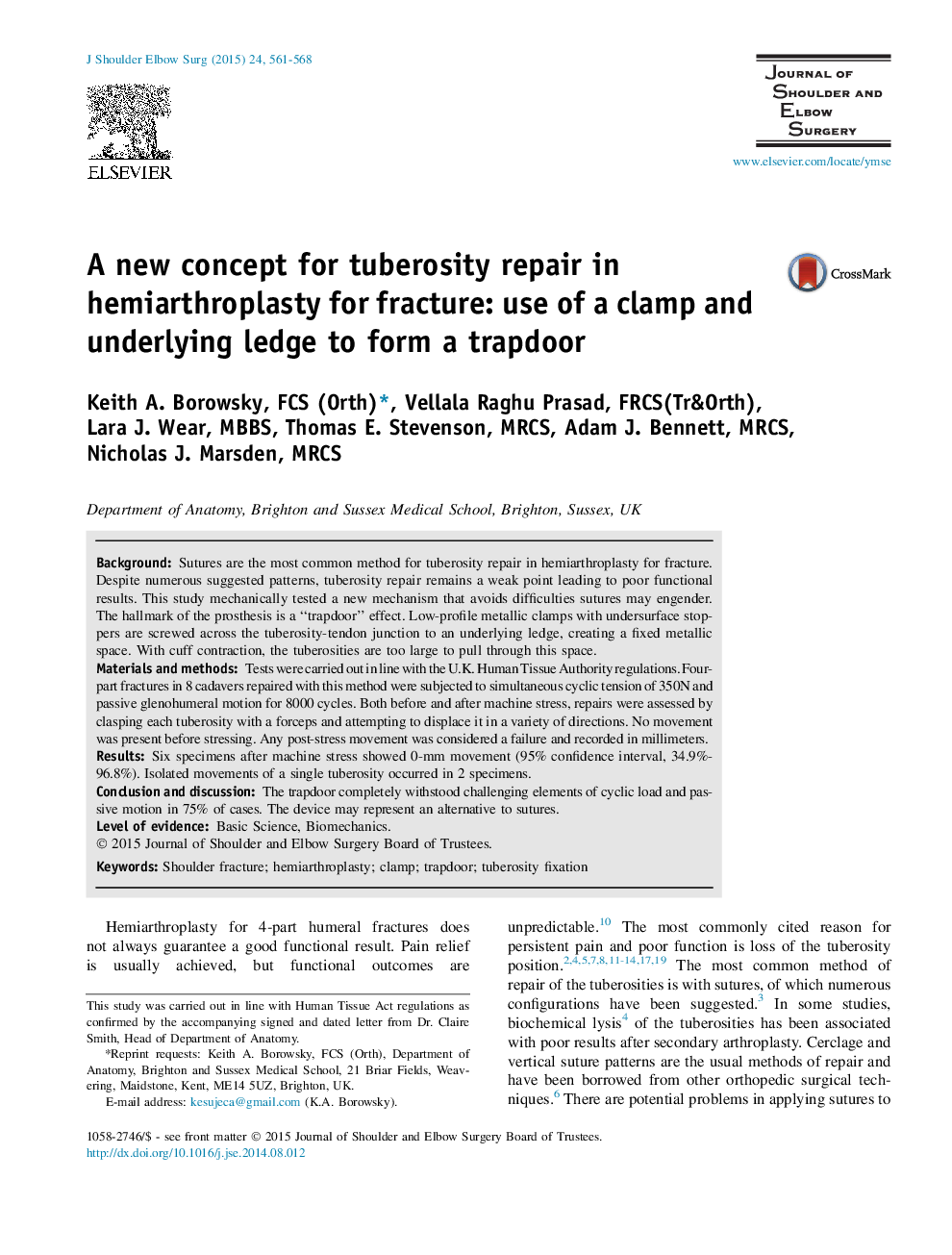| Article ID | Journal | Published Year | Pages | File Type |
|---|---|---|---|---|
| 4073321 | Journal of Shoulder and Elbow Surgery | 2015 | 8 Pages |
BackgroundSutures are the most common method for tuberosity repair in hemiarthroplasty for fracture. Despite numerous suggested patterns, tuberosity repair remains a weak point leading to poor functional results. This study mechanically tested a new mechanism that avoids difficulties sutures may engender. The hallmark of the prosthesis is a “trapdoor” effect. Low-profile metallic clamps with undersurface stoppers are screwed across the tuberosity-tendon junction to an underlying ledge, creating a fixed metallic space. With cuff contraction, the tuberosities are too large to pull through this space.Materials and methodsTests were carried out in line with the U.K. Human Tissue Authority regulations. Four-part fractures in 8 cadavers repaired with this method were subjected to simultaneous cyclic tension of 350N and passive glenohumeral motion for 8000 cycles. Both before and after machine stress, repairs were assessed by clasping each tuberosity with a forceps and attempting to displace it in a variety of directions. No movement was present before stressing. Any post-stress movement was considered a failure and recorded in millimeters.ResultsSix specimens after machine stress showed 0-mm movement (95% confidence interval, 34.9%-96.8%). Isolated movements of a single tuberosity occurred in 2 specimens.Conclusion and discussionThe trapdoor completely withstood challenging elements of cyclic load and passive motion in 75% of cases. The device may represent an alternative to sutures.
